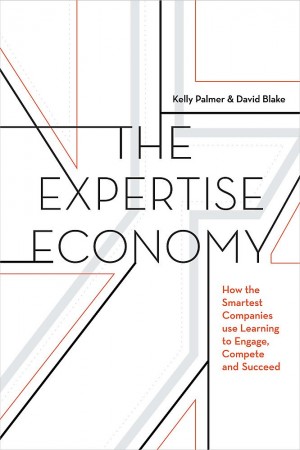Battling the Skills Gap Through Self-Directed Professional Development

Kelly Palmer is the chief learning and talent officer at Degreed and the coauthor, with Daivd Blake, of The Expertise Economy: How the Smartest Companies Use Learning to Engage, Compete, and Succeed . She has held prestigious positions with a variety of organizations, including chief learning officer at LinkedIn, vice president of learning at Yahoo!, and executive roles in learning, mergers and acquisitions, and product development at Sun Microsystems.
Recently, Palmer connected with Recruiter.com writer Jason McDowell via email to discuss the skills gap and advances in professional skills development. Below is a transcript of that exchange, minimally edited for style and clarity.
Recruiter.com: In an age plagued by skills gaps in key sectors, skills development is more crucial than ever. Which are the most effective methods innovative companies use to develop skills within their workforces?
Kelly Palmer: Businesses need to determine where their skills gaps are and make that information available to employees. That way, the entire workforce knows the array of skills the company is looking to build.
In the book, we explain that businesses can get a complete picture of their gaps by collecting data at multiple levels — the industry level, the company level, the organizational/team level, and the individual employee level.
After a business is equipped with this information, the solution is not to assign employees to certain mandatory trainings or one-size-fits-all classes. Instead, businesses must let employees own their professional development.
The most effective leaders inspire employees to personalize what and how they learn. Humans are wonderfully complex, uniquely autonomous, and ultimately unpredictable. We should celebrate and respect that. Employees are likely to choose to learn skills that their companies seek and that address their own personal skill gaps. They’ll be motivated and engaged in the process.
It’s also not enough to simply offer support to your employees and tell them to go off on this journey. You also have to create the right environment — an ecosystem that includes time, opportunity, and resources for learning.
RC: The days of shoving employees into a conference room with a VHS training tape are falling to the wayside. What traditional methods are being phased out of corporate skills development, and why?

In the book, we describe the “learning loop,” which consists of knowledge, practice, feedback, and reflection. It’s proven to work.
RC: As skills gaps grow wider, investments are being made in research to address the problem. What has been revealed by the latest studies about learning?
KP: The latest studies upend a lot of outdated thinking about learning. For example, we now know that both cognition and motivation need to be taken into account. For much of the traditional learning and development efforts companies have engaged in, particularly mandatory training sessions, employees just hope any given class is fun or interesting. With personalized learning, they’re pursuing learning for their own goals — a big driver toward the work it takes to pick up new skills. It’s astounding how many companies have not embraced the science and psychology behind motivating people in the workplace.
In the book, we also bust the myth that there’s a “window” for learning that cannot be reopened once it has been closed. In fact, workers can pick up new skills at any age. Another common myth is that speed of learning equals intelligence. It doesn’t. In some cases, a slower pace of learning can even be better, giving the learner deeper knowledge or understanding of the skill.
RC: There has been extensive buzz in B2B media regarding the skills the workforce will require in a decade, and how some of those skills don’t even exist yet. How can using more innovative learning methods prepare a company’s workforce for a future we can’t totally predict?
KP: This is why we write in the book that today, “the vital skill set for success includes learning agility (the ability to learn new things quickly), collaboration and teamwork, perseverance, curiosity, and the ability to question the world around you. If you aren’t ready and willing to learn every day and keep up with a rapidly changing world, you can’t and won’t stay competitive.”
More innovative learning methods build workforce agility, so an organization is constantly evolving with new technologies and ideas that come along. A central ingredient is a culture of continuous learning, in which learning is a regular part of people’s everyday work. It becomes a habit. People might spend 15 minutes watching a video, reading an article, listening to a podcast, or taking an online course. Or they might have time to do even more learning. Some companies are making sure employees spend hours every week developing new knowledge and skills.

